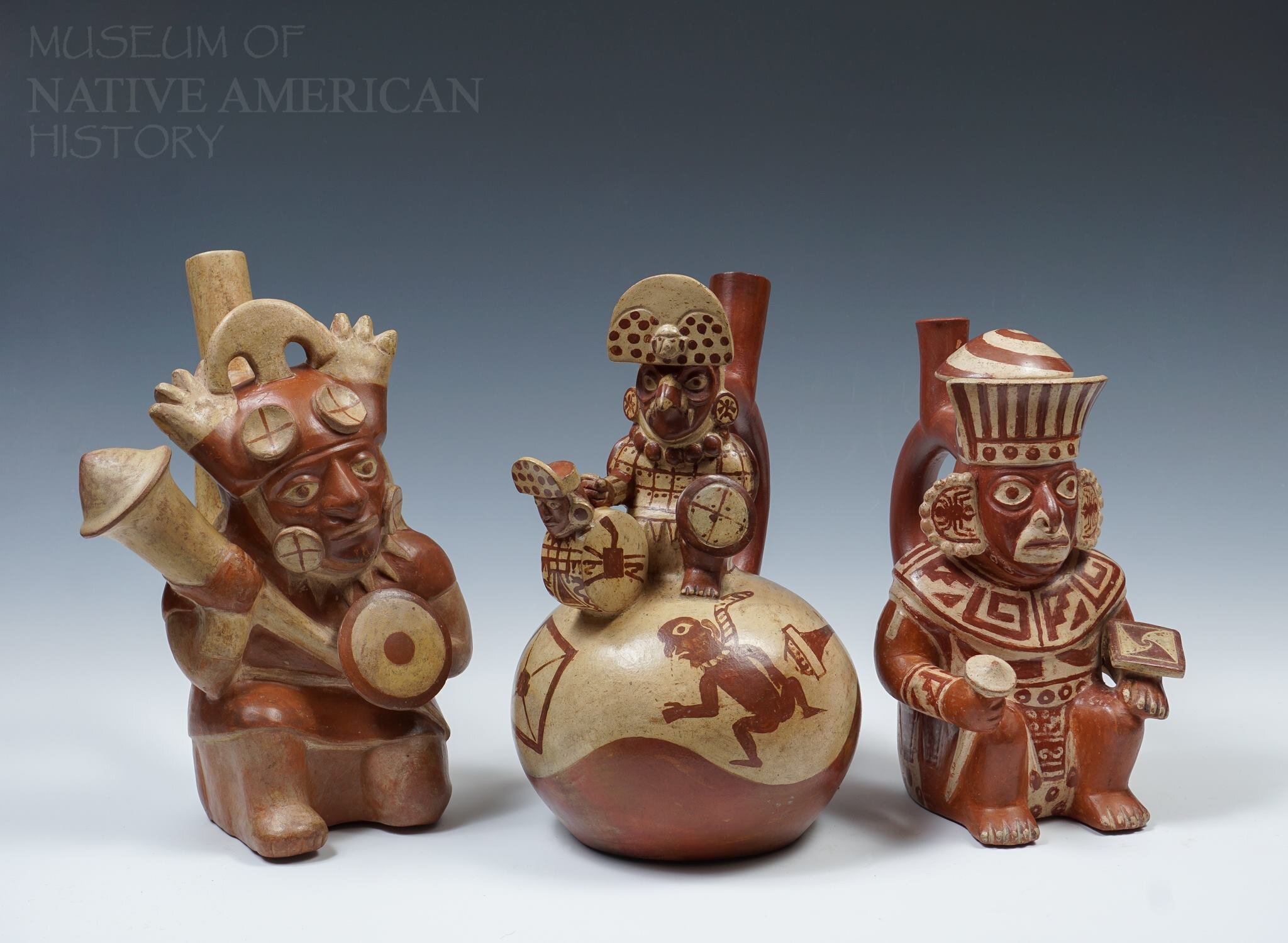Moche Ceramic Vessels
The Moche culture began its history around 200 A.D. along Peru's northern coast and fell around 900 A.D. Compared to the cultures who came before and after, in both Central and South America, the Moche excelled in their craftwork through innovation and sophistication. Their artisans and artists left behind valuable looking-glasses to their culture's values, ideology, mythology, and religious practices found in the crafts they created. As 21st century viewers, we must keep in mind that these objects were made with a Moche artisan's intention. It is crucial to understand these objects within the historical and cultural contexts they were meant to be viewed. The vast range of iconography found in ceramic vessels and sculptures are essential for allowing art historians and other scholars to pull critical points from the culture. However, they were also well known for silverwork and textiles as well.
Moche pottery and ceramics are unique for their naturalistic representations and overall technique in construction. The art represents a wide range of subjects, from humans, animals, mythic figures, and plants. Moche pottery's distinctive characteristics are the colors, artistic rendering, and arguably most distinctive, the "stirrup" spout. The stirrup spout looks similar to modern fitness kettlebells with an attached tube at the top. Many of these ceramics were made from molds, which could quickly produce many of the same type. While I could write pages about many kinds of stylization of Moche ceramics, some of the most captivating are the human figures, particularly the head. Many scholars hail these depictions for their "portrait-like" representations of anatomical forms. Whether or not they represent a particular person's physical likeness in history, we will never know. However, they show us which elements a Moche person considered important enough to represent. These representations can speak a thousand words about the culture, from facial tattoos, textile patterning, piercings, and overall appearance.
Pictured here we see a portrait head vessel from the MONAH collection. While less elaborately decorated than others, it shows depicts the likeness of an individual from the past, featuring their face paintings or facial tattoos. Other portrait vessels capture textile patterning, jewelry, and even signs of scarring and disease. It is interesting to consider their thought process on including these blemishes. The head vessel is much different from other ceramic human representations of the same culture. Above, we have three different vessels from the collection: two full seated figures, and one smaller figure sitting on a bottle with a painted scene. The iconography of each shows vastly different representations of the people. You can see how this is a complex society full of beautiful textiles, intricate garments, and perhaps limited freedom of artistic expression.
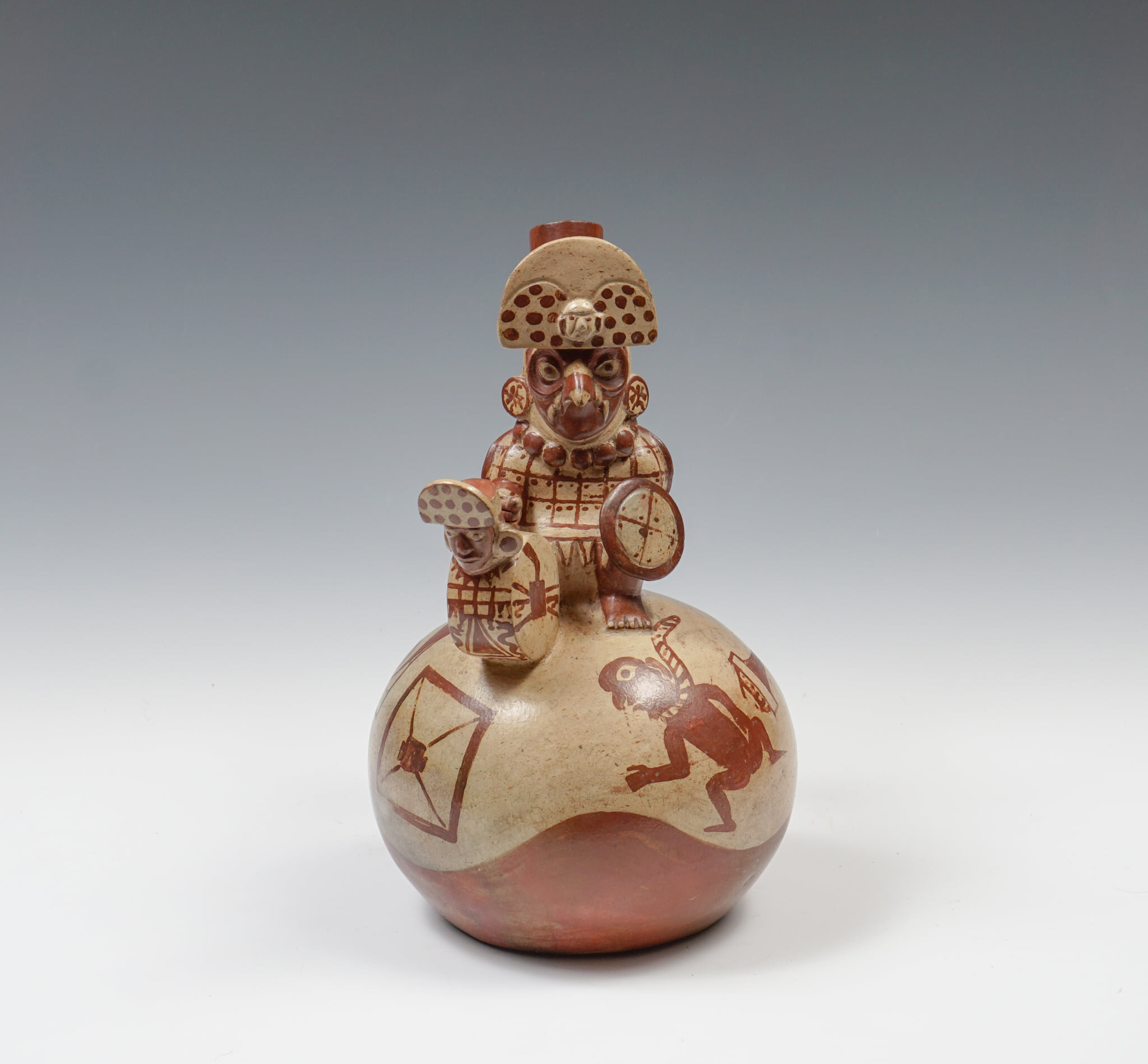
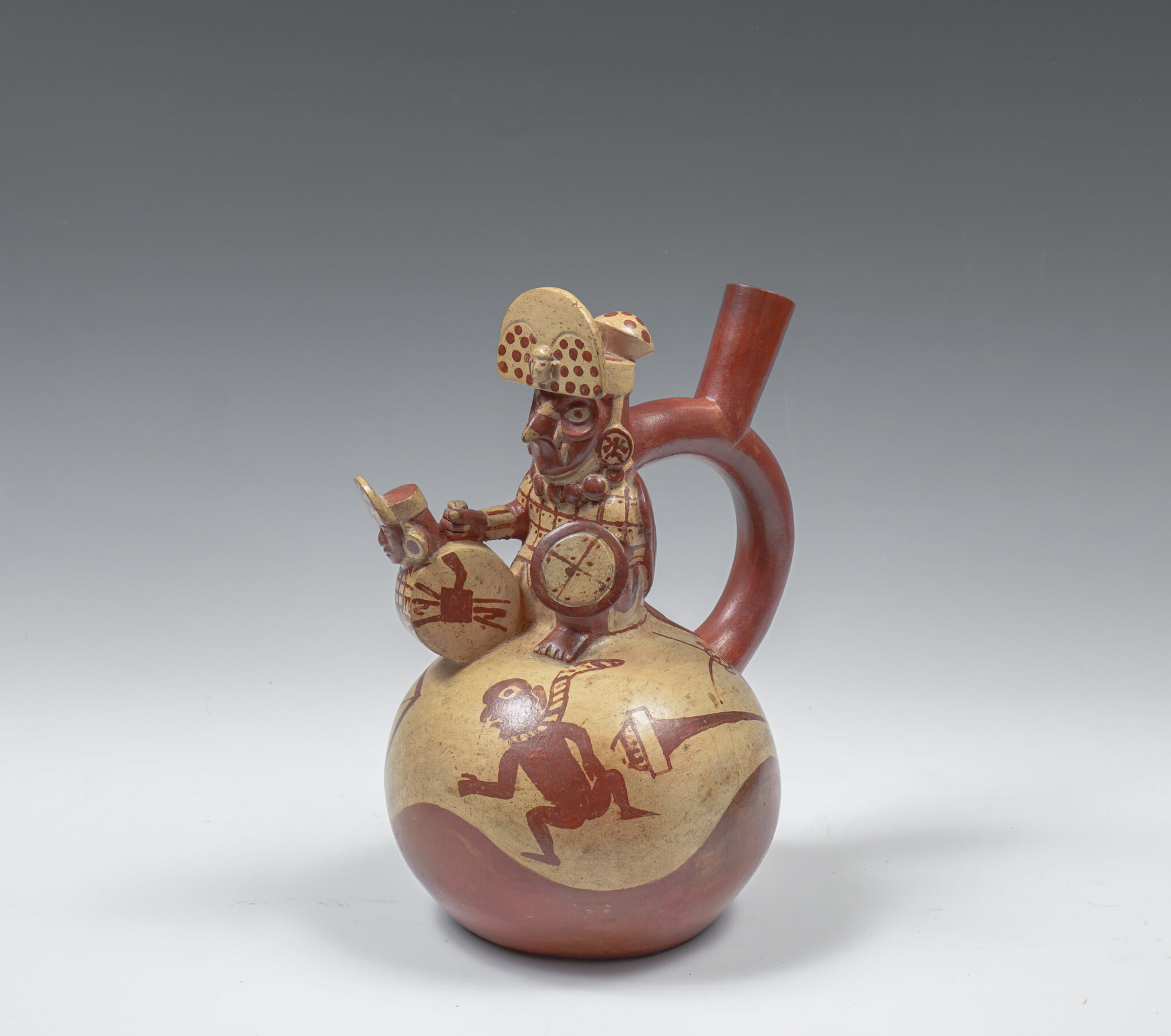
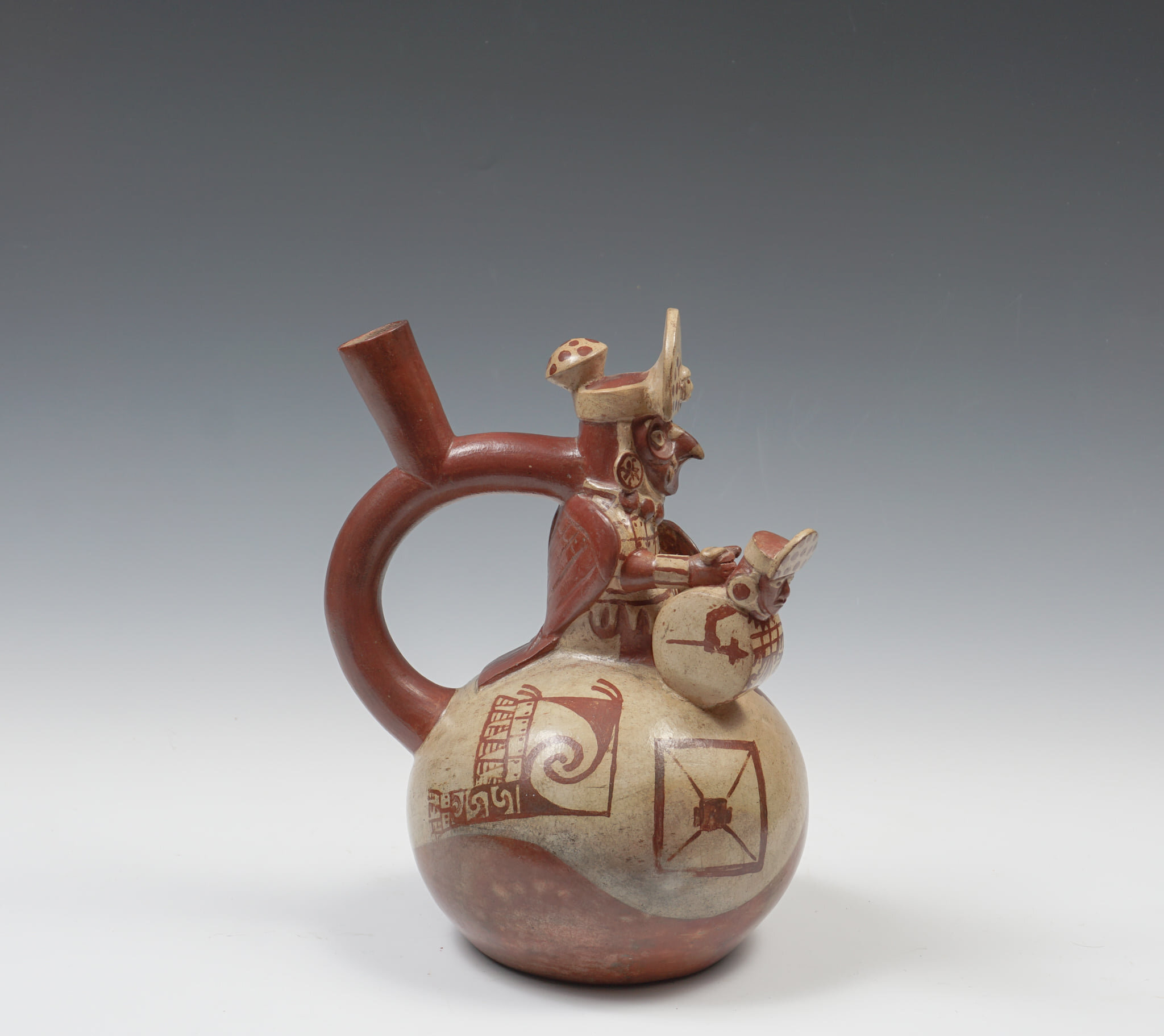
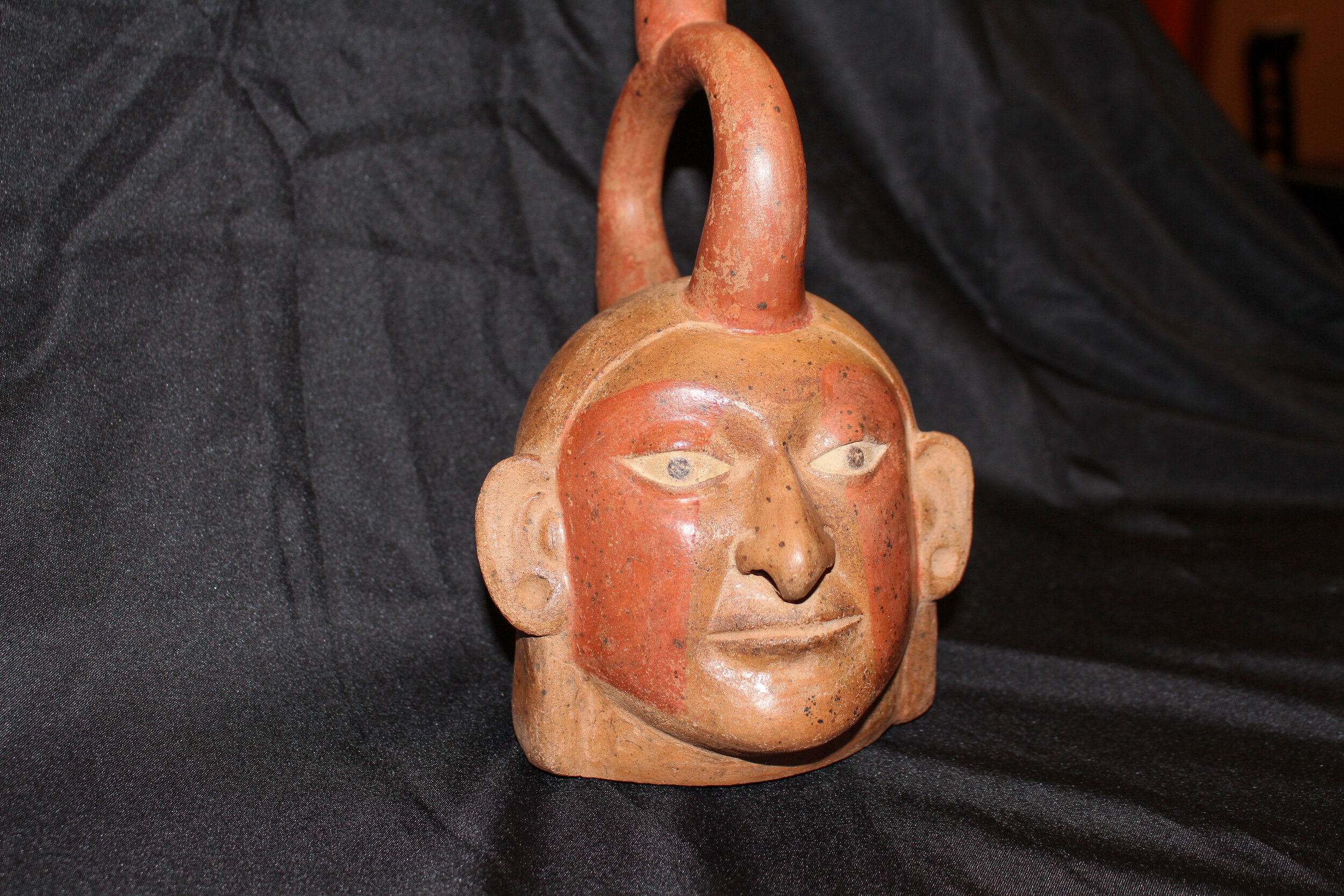
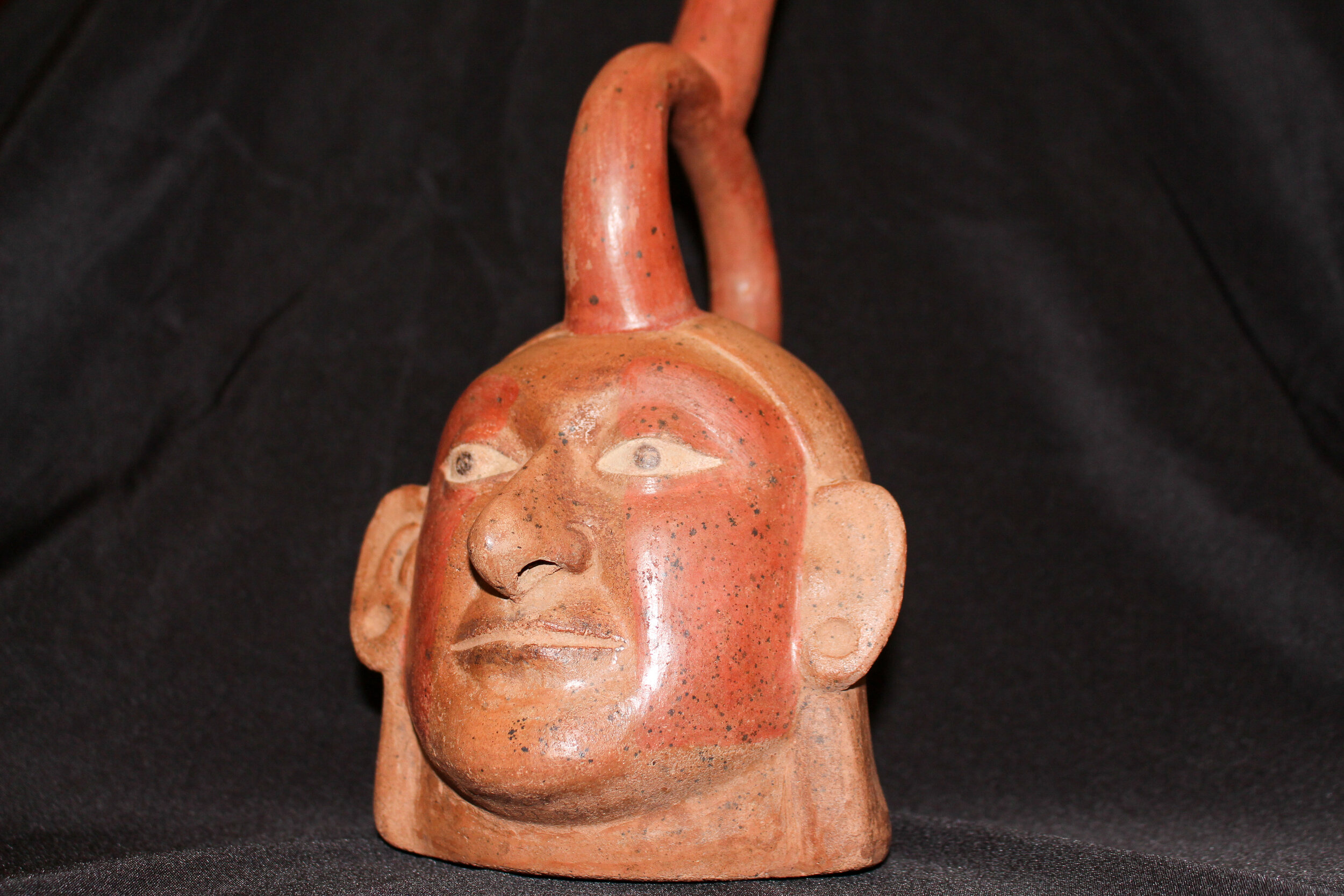
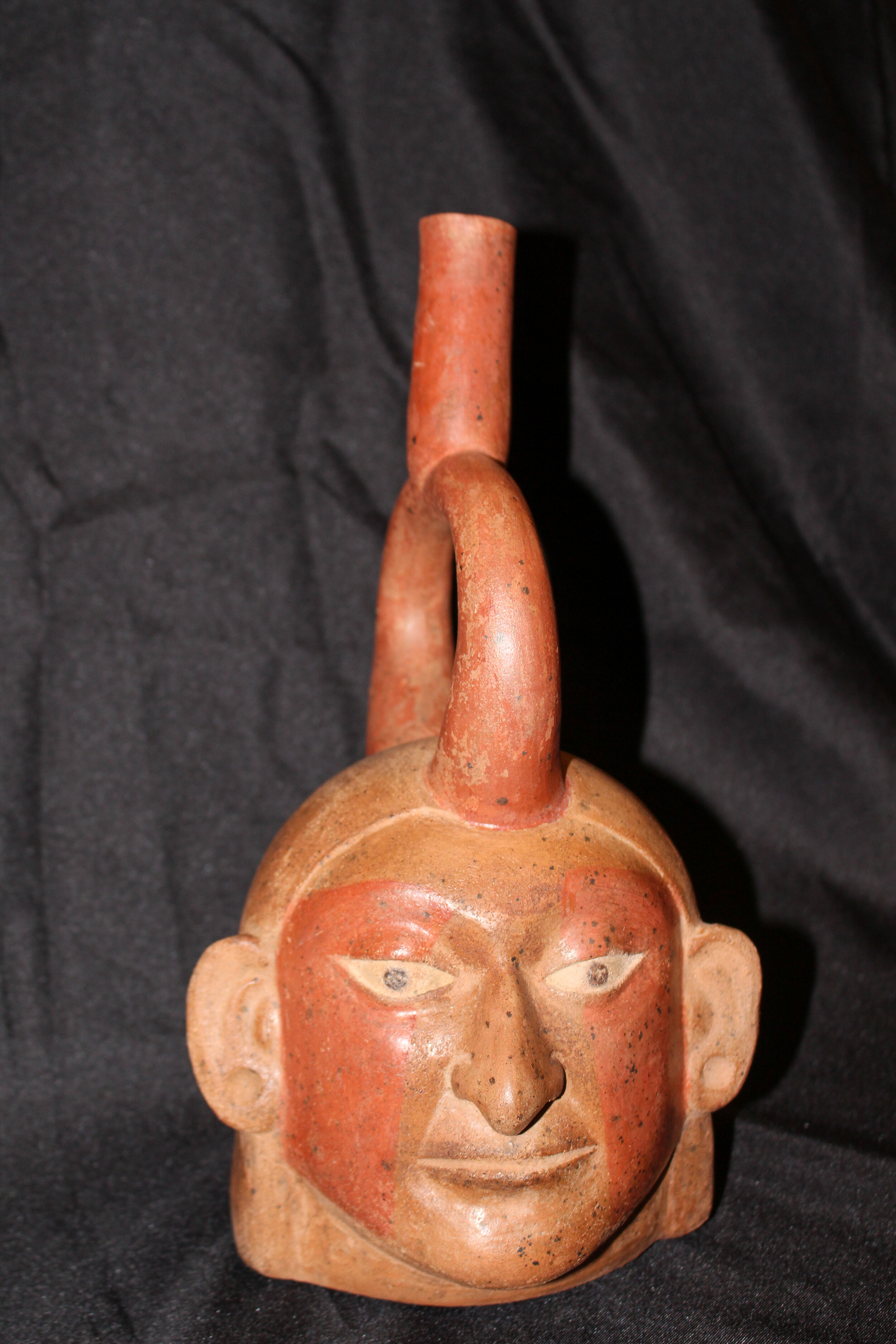
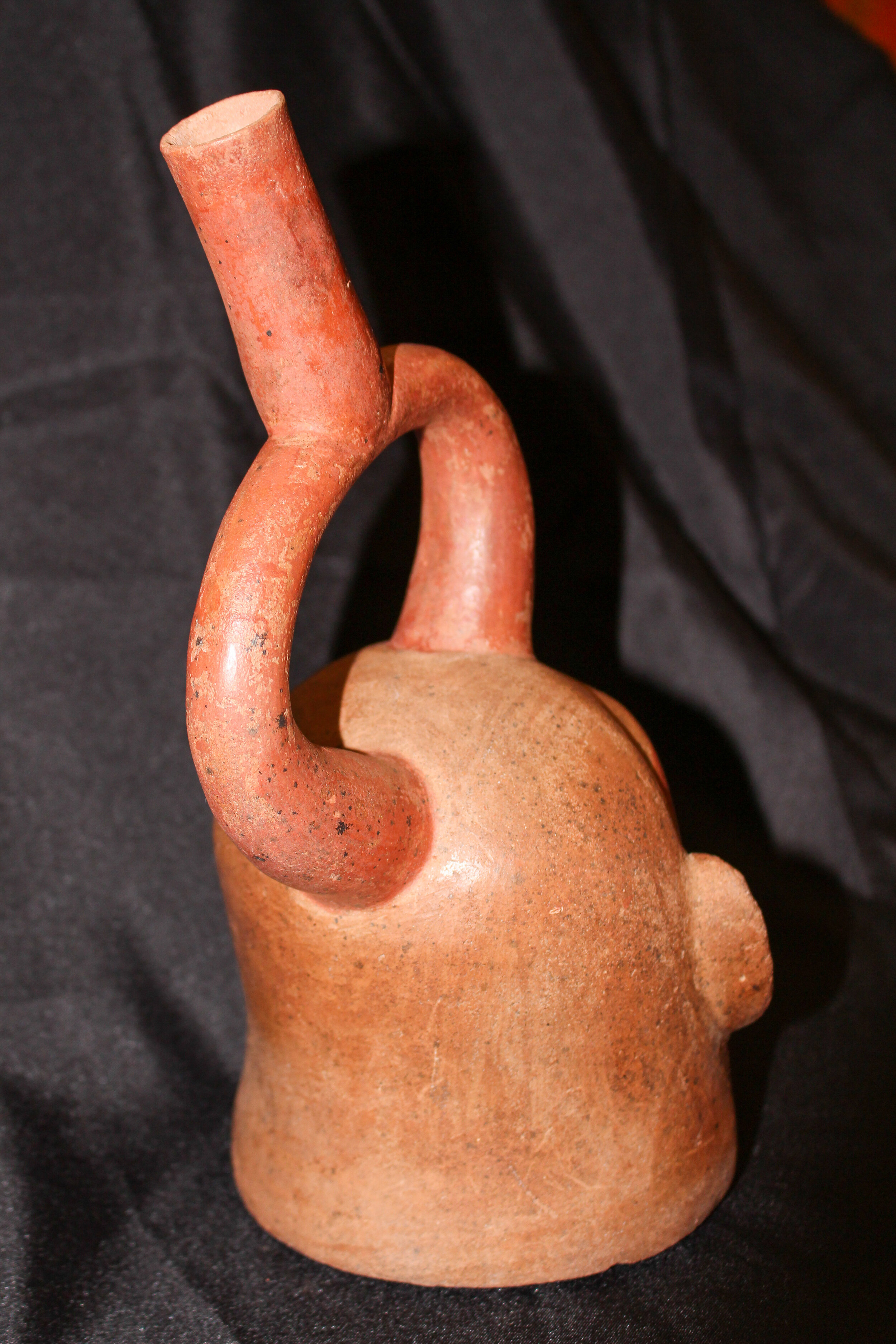
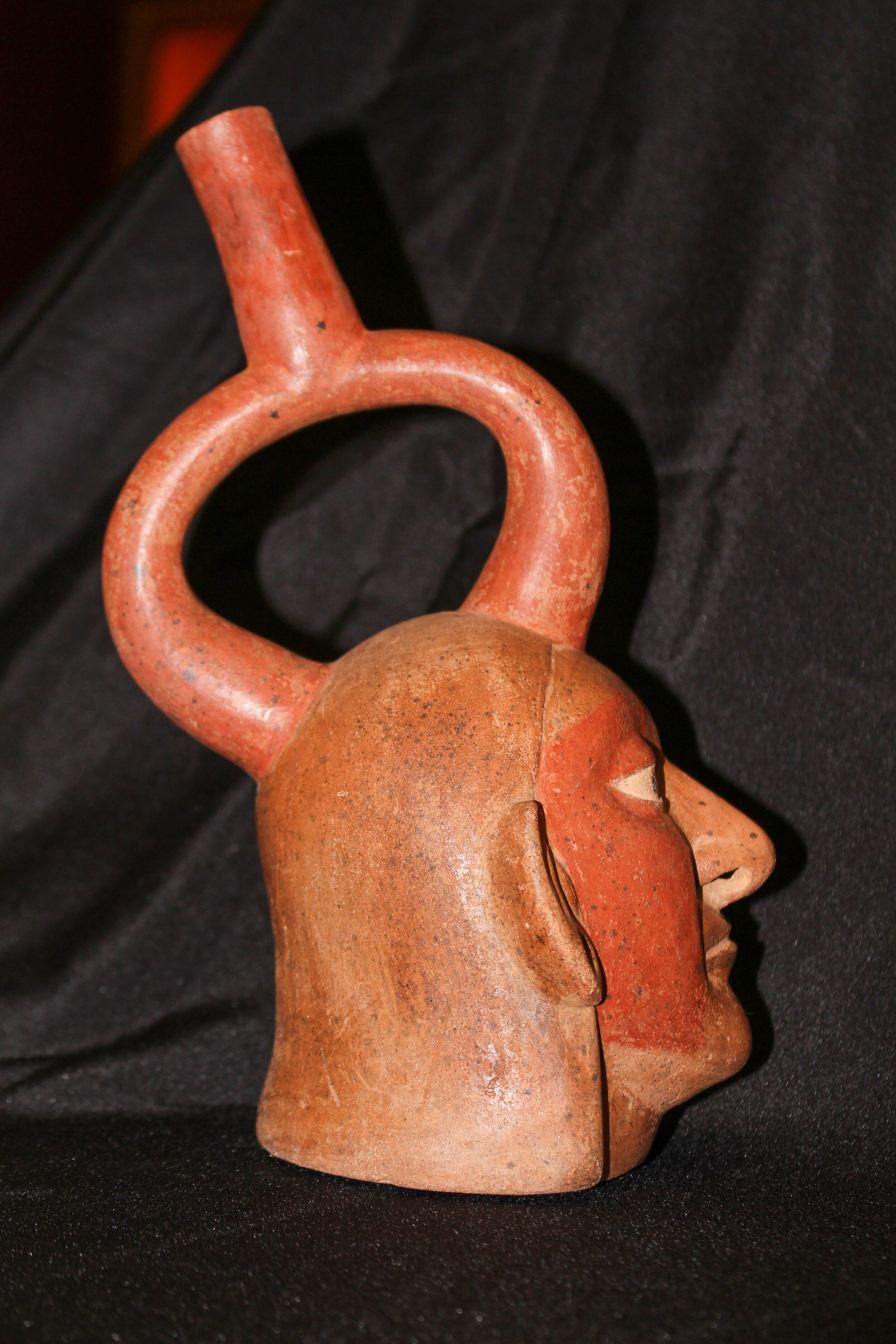
So what about the ceramic craftsperson? While we do not know much about the crafts' conditions, archaeologists and other scholars continue to figure out this side of the story. For example, arts were a large part of the city at an archaeological site at Pampa Grande, a Northern Urban Capitol around 700 A.D. Some workshops discovered have evidence of multiple crafts, which were likely a part of a collaboration and coordination between different artisans. For example, artisans worked textiles and metal within the same complex to combine their work into one product, a garment with metal embellishment. Within a workshop, the artisans gave their loyalty and service to the elites, who managed the site, in exchange for food, drink, and hospitality.
Since we have no written record from the Moche, we rely on their art to speak for them. The contexts of the object would have imbued meaning to the intended viewer. Artisans and elites indeed were selective in their representations of society, focusing on what is necessary for the object's intended use. Ceramics would have been used domestically and ritually; they were also important in ceremonial burials. As you look at these ceramics, you could imagine the importance of representing a religious official for a ceremony or perhaps a warrior at the grave of a fallen soldier. The portrait vessels, too, for taking on the likeness of someone in death. Moche art requires us to look beyond the object and towards the human context and meaning it iterates. The art of this culture lasts forever to tell their stories.
Blog by Jazlyn Sanderson
References:
Shimada, Izumi. "Late Moche Urban Craft Production: A First Approximation." Studies in the History of Art, 63 (2001): 176-205.
Trever, Lisa. "A Moche Riddle in Clay: Object Knowledge and Artwork in Ancient Peru." The Art Bulletin, 101:4 (2019): 18-38.


